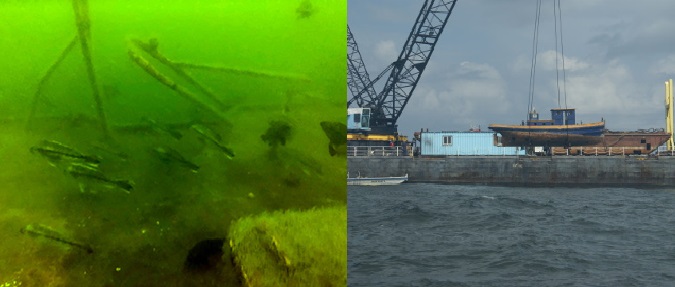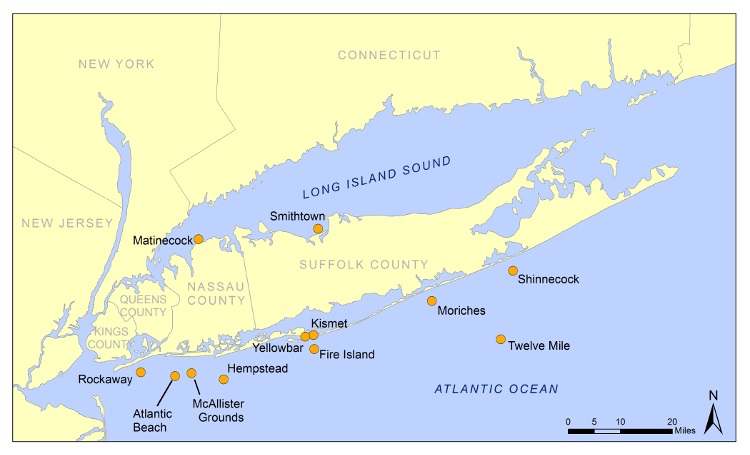
Governor Andrew Cuomo announced the largest expansion of the Artificial Reef Program in state history, carried out by a multi-agency coordination and with recycled material from the Department of Transportation, Canal Corporation, and the Thruway Authority. Materials being deployed for additional reef structure include tug boats, barges, scows, clean concrete and steel, and recycled materials from the demolition of the Tappan Zee Bridge.
Before material can be deployed at artificial reef sites it must be inspected and cleaned of hazardous substances such as, petroleum products, asbestos, PCB’s and more. DEC collaborates with multiple federal agencies to ensure material meets strict standards and is appropriate to use in marine environments. These materials will support the development of six artificial reefs on Long Island at sites off the shores of Smithtown, Shinnecock, Moriches, Fire Island, Hempstead, and Rockaway.
Download our brochure describing the program with a map of all the reef sites (PDF).
Fishing and Diving on New York’s Artificial Reefs
New York State artificial reefs were developed to increase fisheries habitat. They provide marine fish and other organisms additional opportunities for shelter and foraging and may increase productivity in the areas where they are placed. Anglers visit artificial reef sites to benefit from the increased fishing opportunities they provide. Divers also visit our reefs for nature observation, photography, and catching fish and lobsters.
You can find fish, crustaceans, molluscs, sponges and even temperate corals on New York’s artificial reefs!
Creating New Habitat
Artificial reefs are built out of hard, durable structures such as rock, concrete, and steel, usually in the form of surplus or scrap materials (e.g. vessels, dredge rock, and military vehicles, etc.). All harmful substances are removed from the material before it is deployed on the reef sites.
Marine Life Moves In
As quickly as the material settles on the sea floor, the reef structure begins to fill with marine life. Fish like blackfish, black sea bass, scup, fluke, hake, and cod move in to check out the new structure.
Lobsters and crabs also take up residence in our artificial reefs, and encrusting organisms like barnacles, sponges, anemones, corals, and mussels cling to and cover the material.
Over time, the structure teems with sea life, creating a habitat very similar to a natural reef.
Artificial Reef Sites
There are 12 artificial reef sites in New York State that are managed by the DEC Marine Artificial Reef Program.
A map, site coordinates and other details for the reef locations, GPS coordinates, and the materials deployed on each reef site are available for you to use to plan your trip to a New York State reef site.
Angler and Diver Observations
While visiting New York’s artificial reefs, you will have the opportunity to observe a variety of marine organisms and environmental conditions. Please consider sharing what you see while diving or fishing with the DEC reef monitoring program. By contributing to the DEC’s volunteer reef diver program or the volunteer reef angler program you can assist in this effort. The information you share will help us learn more about the marine populations found on our artificial reefs and provide feedback on how to improve your experience on our reefs.

